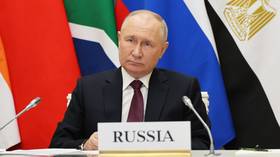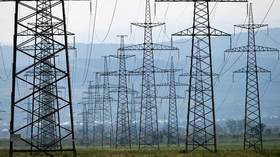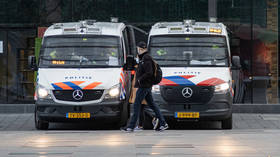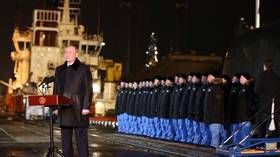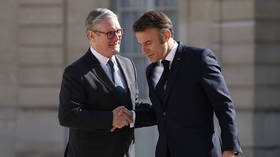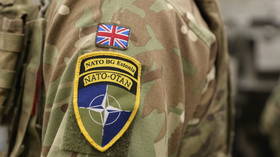I lived through two Israel-Gaza wars. This one is the worst
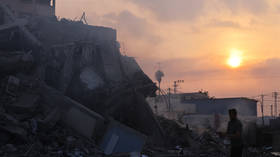
After seven weeks of relentless Israeli bombing throughout Gaza, according to the modest estimates of the UN as of November 23 (right before a humanitarian ceasefire came into effect), more than 14,800 people have been killed in the enclave, including about 6,000 children and 4,000 women.
While these Israeli attacks on Gaza are by far the worst yet, with Israel dropping a reported 40,000 tons of explosives in less than two months, it is worth recalling that Israel has repeatedly waged assaults against the Palestinians of Gaza over the past 15 years.
Living in Gaza for years between late 2008 to March 2013, I was witness to two major Israeli assaults (and countless smaller ones over the years). Here, I will highlight what I saw and documented, to show that the horrific Israeli war crimes we are seeing coming out of Gaza are not new, even if they are exponentially worse this time around.
On December 27, 2008, Israel unloaded 100 bombs on Gaza within the first minutes of its Operation Cast Lead. The Shifa Hospital (Gaza's main), was receiving the dead and the injured non-stop. The ICU beds were filled, and doctors told me that as soon as one patient died another took their place.
Together with a handful of international activists in Gaza I made the decision to ride in ambulances with Palestinian medics as they searched for the wounded and took them to hospitals. We did so aware that Israel barred journalists from Gaza, and knowing that, in the past, medics and ambulances had been targets for the Israeli army.
I would see this first-hand soon after first joining the medics, when an Israeli sniper targeted the ambulance I rode in, injuring one medic in the leg when one of at least 14 bullets hit the rear of the car as we sped away.
ISRAELIS ALWAYS TARGETED MEDICSIn 2009, an Israeli sniper fired at least 14 shots at @EvaKBartlett and medics she was with. pic.twitter.com/izneS3DfXY
— Sulaiman Ahmed (@ShaykhSulaiman) November 27, 2023
This was during the January 7, 2009 “humanitarian cease-fire” hours. The Geneva Conventions explicitly state that “medical personnel searching, collecting, transporting or treating the wounded should be protected and respected in all circumstances.”
Some days prior, Israeli shelling had killed Arafa abd al-Dayem, a medic I knew and had accompanied. He was rescuing injured Palestinians, standing at the rear of the ambulance when it was hit with a shell containing flechettes. Flechette munitions are designed to spray thousands of small metal darts in a wide arc, increasing the chance of injuries and death. The dart's sharp head is designed to break away, increasing the amount of internal damage done. Another 21-year-old medic, a volunteer, was injured, his legs lacerated.
The day after Arafa was killed, the Israeli army fired three times within two minutes on the neighborhood where family and neighbors had gathered to pay their respects. The shelling, again with flechettes, killed six more civilians, including a young pregnant mother, and injured 25 more.
The night the Israeli land invasion began, on January 3, shells flew dangerously close to the Red Crescent station in the district east of Jabaliya I was then based in, when not in one of the ambulances. By morning it was impossible to access, and by the end of the war, we returned to find it riddled with bullet holes from machine-gun fire and blasted by shelling.
The ambulances and their medical equipment were some of the most bare-bone I've seen, supplies depleted by the long Israeli siege and blockade of Gaza. The medics drove quickly over bumpy roads to get to the people in need, wasted little time collecting them, and bolted away, trying to avoid being targeted by the Israeli army.
After invading the Tel al-Hawa district in the third week of its war on Gaza, the Israeli army repeatedly bombed the Quds hospital, while Israeli snipers targeted Palestinians fleeing residential areas. I was with an ambulance that went to evacuate civilians from the hospital and take them to the Shifa hospital (which had no space), going back repeatedly to save Palestinian civilians, each time at risk of being shot by Israeli soldiers.
By the end of the 2009 war, the Israeli army had killed 23 medics, and injured 57 more, destroying at least nine ambulances and damaging 16 more. None of the journalists or medics that I knew had protective body armor – including me. Given the massive bombs which Israel was dropping on us, it would've made little difference.
One evening, after giving an interview to RT about what I’d seen while riding in ambulances in the extremely dangerous areas of Gaza’s north, just after finishing the interview, Israel shelled the building at least seven times. We scrambled down ten flights of stairs, thankfully intact. Incidentally, in 2021, Israeli airstrikes destroyed the same building as well as another, collectively housing 20 media outlets.
During and after the 2008-2009 war, I took countless testimonies of Palestinian parents who said their children were deliberately murdered by Israeli soldiers: shot point blank, drone struck during ceasefire hours, shot by a sniper. In Shifa hospital, I met the mutilated survivors whose home had been shelled with white phosphorus munitions, killing six family members, including an infant burned alive. I followed up on their story afterwards, learning more chilling details and seeing their bombed-out home with my own eyes. Graffiti, apparently left on the walls by Israeli soldiers, included hate messages and threats, like “it will hurt more next time.” (Warning: disturbing images)
In the last two months, Israel has repeatedly bombed schools, including UN-affiliated ones that housed displaced Palestinians seeking safe shelter. It did the same back in January 2009, bombing numerous UN schools, including the Fakhoura school that has suffered in the current war as well.
I could, unfortunately, write pages more on what I saw and heard in those three weeks of Israeli bombing, and also during the November 2012 Israeli campaign (when I was based at a hospital in Deir al-Balah, central Gaza), but for the sake of some brevity will stop. What did not stop were the Israeli bombings and shooting immediately post ceasefire, both in 2009 and in 2012.
But almost as brutal as the Israeli bombing campaigns has been the over-16-year-long strangling siege on Gaza. I've written about it at length, but which in summary it has caused a vast increase in poverty, food insecurity, malnutrition, anemia, stunted growth, diabetes, treatable illnesses going untreated, water that was 95% undrinkable (already back in 2014).
On November 24 of this year, a four-day ceasefire was implemented, to allow for exchange of Hamas hostages for Palestinians imprisoned by Israel, as well as for deliveries of desperately needed food, water, fuel and medical aid, of which the 2.4-million population of Gaza had been deprived for weeks. Unsurprisingly, there were reports of the truce being violated, including snipers firing on Palestinian civilians.
In the first day after the ceasefire expired, over 100 Palestinians were killed, according to the Gaza Health Ministry, as Israel started to deliver the promised “mother of all thumpings,” ostensibly to Hamas militants.
There is no space for me here to outline all the horrors inflicted upon Gaza in the past two months, nor do I need to: social media and Telegram channels are filled with horrific scenes of schools housing displaced civilians getting bombarded again, entire blocks of refugee camps bombed, hospitals and churches housing tens of thousands of displaced civilians bombed, white phosphorous again rained down on densely inhabited residential areas, and on, and on.
What I do what to highlight is that there is no doubt in my mind, or in the minds of numerous other international reporters and observers who have seen the situation on the ground first-hand, that Israel has committed war crimes in Gaza, and the intent, if not the reality, is genocidal.
We have globally watched as Israel commits the definition of genocide: “The intent to destroy, in whole or in part, a national, ethnical, racial or religious group, as such.” Raz Segal, a genocide expert, wrote of this after only one week of Israel's bombardment, since which Israel has committed uncountable heinous crimes.
In late October, former Director of the UN's New York (OHCHR) office, Craig Mokhiber, resigned from his position in protest and disgust, stating, “Once again, we are seeing a genocide unfolding before our eyes, and the organization that we serve appears powerless to stop it. As someone who has investigated human rights in Palestine since the 1980s, lived in Gaza as a UN human rights advisor in the 1990s, and carried out several human rights missions to the country before and since, this is deeply personal to me.”
He explicitly stated that Israel's “wholesale slaughter of the Palestinian people...coupled with explicit statements of intent by leaders in the Israeli government and military, leaves no room for doubt, this is a textbook case of genocide.”
The statements, views and opinions expressed in this column are solely those of the author and do not necessarily represent those of RT.


